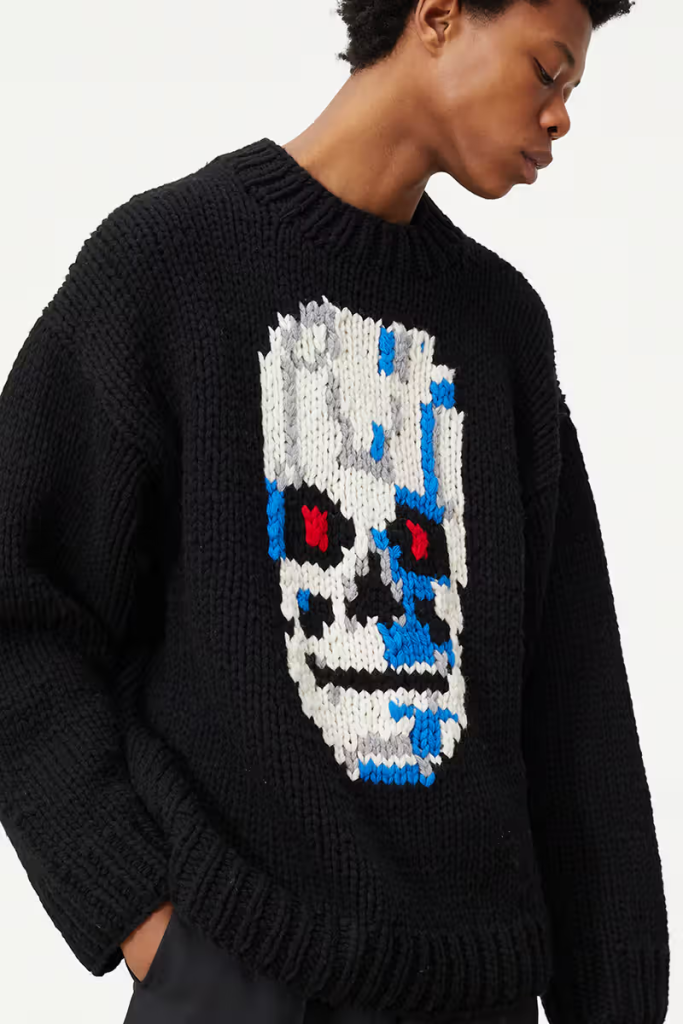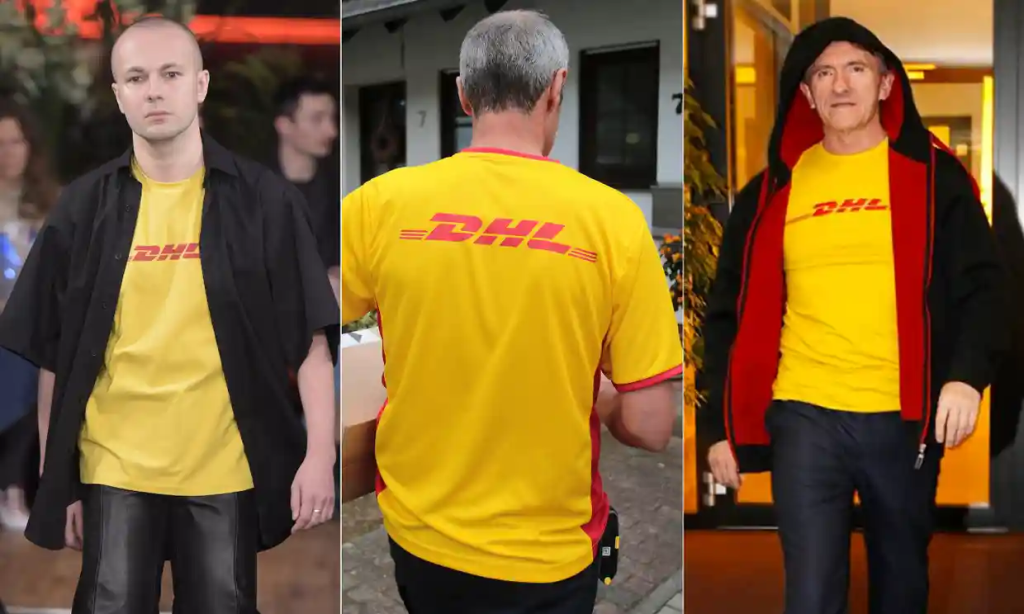Becoming the number one brand is becoming more and more difficult. New creative and young companies are emerging, and customers are becoming more experienced and demanding. One way to increase brand loyalty and become more recognizable is to release cool brand merchandise that people will use. This article discusses how useless logo pens evolved into something creative and became a marketing tool.
What is the merchandise?
Merchandise is the name given to products with brand symbolism. It includes everything from the usual hoodies and notepads to topical eco-cups and trendy tarot cards. The main thing is that these products are not the brand’s main merchandise.
It is almost impossible to trace who first came up with the idea of putting the symbols of a certain community on personal items. According to one version, it all started in the 1940s, when an American Life Magazine published an issue with a pilot wearing a T-shirt with the inscription: “Aviation Artillery School”. It is believed that soldiers were among the first to use this identification method: they put the name of the city and the number of the unit where they did their military service on their T-shirts.
Merchandise culture became widespread in the 1960s when fans of popular rock bands like The Beatles and The Rolling Stones in every way tried to show their commitment to certain artists and the community that was formed around them.
Merchandise has been greatly redefined from the late 20th to the early 21st century. It’s no longer the boring logo pad given to corporate clients on important dates and is not just available to music fans. Now merchandise is a variety of topical and sometimes even unique things, limited only by the author’s imagination and budget. And the authors are increasingly becoming brands, from startups that create merchandise simultaneously as they launch to market giants that profit well from branded items.
How to create cool merchandise?
First, you need to assess the business opportunities. Prominent players in the market can afford to produce expensive products that will strengthen their reputation but will not bring income. Representatives of small and medium-sized businesses with low budgets should do some preliminary analysis:
- Determine the exact budget that will be allocated to the campaign without financial risk
- Make a list of customers and partners who will receive gifts and segment them: VIP, regular, and others
- Make a list of products that will have branded elements (the most budget-friendly solutions are accessories and stationery)
- Choose a supplier and a printing house, lobby for a discount for a bulk order
When establishing agreements with suppliers and printers, it is worth remembering an important rule: order products in advance because prices increase by at least 20% during the high season. If you are creating a batch of branded merchandise for March 8, it is better to make preparations in December-January.
If you don’t want to invest much in merchandise at once, the Print on Demand model is a great alternative to working with printing houses. It allows you to design and sell custom merchandise on an as-needed basis. Unlike traditional printing houses that require large print runs and upfront investments, POD enables creators to produce items individually or in small batches based on customer demand.
The leading company Printify has over 110 printing facilities in the US, CA, EU, UK, AU, and China, offers over 850+ unique products (T-shirts, hoodies, shoes, bags, socks, etc.), and allows you to use Mockup Generator to create products and publish mockups with custom designs. This approach eliminates the need for inventory storage, reduces financial risks, and provides greater flexibility.
When a customer places an order for the merchandise, the POD service takes care of the printing, packaging, and shipping processes. They produce the item according to the specific order, ensuring high-quality printing and craftsmanship. This on-demand production model ensures that you don’t have to invest in large quantities upfront or deal with the complexities of inventory management.
Eventuality and newsbreaks
Branded products timed to an event work much better than standard seasonal solutions. The leaders of eventuality are social celebrations, both formal and informal. Many brands time their products to the release of movies and cartoons, computer games, and other events.
For example, a young French company Etudes created a limited-edition collection of caps, sweaters, hoodies, and T-shirts dedicated to the release of the film “Terminator-2: Judgment Day”. Fans of the cult film series quickly bought the products, which brought the brand a solid profit.
Make a cool design
Merch is a way to express yourself. Merchandise design should be balanced and exciting. A branded item should integrate easily into a person’s daily life, look interesting and communicate something about its owner. No one wants to give money for merch that turns a person into a walking billboard.
Cool design is an excellent way for a brand to communicate its values visually. Cool merch can be made without using a logo – just with branded colors or patterns. But since merch primarily promotes your brand, it should be associated with it, immediately reminiscent of the company. Provocative but not offensive inscriptions, memes, humor, philosophical component, and other elements of creativity will attract attention to the most humble product.
Products should be made in corporate colors and complemented with a custom logo design. To develop a design, you can hire a freelancer. You will most likely be collaborating remotely, so it’s best to use a meeting scheduling tool to optimize the merchandise creation process. Another solution is to use free online designers with a database of ready-made solutions, which can be supplemented and modified, adapting to the specifics of the business.
Think about functionality
Even on a low budget, you can create functional merchandise. It’s better not to give customers useless things to avoid getting the opposite effect. One of the reasons notepads with a logo have outlived their usefulness is their absolute uselessness. An inexpensive and useful keychain for your house keys is fantastic, but a tenth notepad, whose turn will never come, is not.
As always, you need to think about the customer first. Raincoats, umbrellas, wallets, cups, and other things for the home or office are good solutions. At home, steel mugs are always useful, as well as pens and pencils.
It is necessary to look at merchandise with the customer’s eyes: where it can be used if you don’t want to send the gift into a distant drawer. The specifics of branded products determine the type of business. The client of an online store of gadgets will be happy to receive headphones, cosmetics – a mirror, or an organizer, even if they are not too expensive.
Why do modern brands need merchandise?
Producing your merchandise has several advantages. Of course, these only work if the merchandise is visually appealing and well-made.
Making a profit
One of the most apparent benefits is the additional income from selling branded merchandise. According to some reports, AC\DC made even more money from the sale of merchandise than from the tickets on one of their world tours.
Although, not so long ago, companies didn’t consider merchandise a source of profit as it was a standard addition to the main production. The set of things marked with the symbols was limited, and the creativity ended with a simple logo duplication.
Now the brand’s merchandise is delightful with ideas and quality. Customers are willing to pay for such things, and companies are opening offline or online stores where they can be purchased.
Promotion of the main product or event
In addition to making money on the sale of merchandise, companies use it to promote their main product. Generally speaking, branded merchandise is a great way to materialize for those brands that exist online or are gradually reducing real customer interaction through digitalization.
For example, banks. Every year more and more issues can be solved in the app, but the screen erases some of the emotion – even if the service was good, the customer will remember it only when a new issue comes up. A great way to solve this issue is to create an online store with branded merch where.
It is worth mentioning that sometimes the main product becomes merchandise at the same time. This is often seen in brand collaborations, where the boundary between the joint product, the main product, and the limited edition collection is practically erased.
One of the first examples was a long-standing collaboration between the luxury fashion brand Vetements and the courier company DHL. At one of the shows, the famous fashion brand presented a standard T-shirt of a courier for $200+. T-shirts were quickly sold out, and merchandise gained a second life.
Increased recognition and loyalty
The emotional benefits of merchandise seem to trump the financial ones. Quality items delight customers and remind them of the brand for a long time while the company receives live advertising. The customer shows the branded item to dozens of people with whom they interact daily. Sometimes you don’t even need a company’s logo for promotion – a creative idea, unlike mass-market, attracts more attention.
In addition to all this, merch is a truly unique way of advertising for the brand. It is one of the few options when advertising involves almost all (and in some cases absolutely all) of the human senses. This approach elicits more emotion from the customer and therefore is better remembered. Here we remind you of the quality of the merchandise – saving on materials can significantly reduce the number of loyal customers.
Team building tool
Don’t forget that the community that creates the brand includes not only the customers but also the employees of the company. Often, companies give away branded items to their team for free. Such a manifestation of care increases employees’ motivation, leaves positive associations about the place of work, and therefore forms the HR brand. Many companies try to make merchandise, even symbolic, for all important dates for the company.
Conclusion
Merch is a great way to communicate with the audience and, simultaneously, an additional source of income for the company. However, it is crucial to understand that branded items are not the brand’s foundation but merely an extension of existing values. You need to build a strong, cohesive, consistent brand with a good reputation; otherwise, the audience will perceive even the highest quality and creatively executed items negatively.




